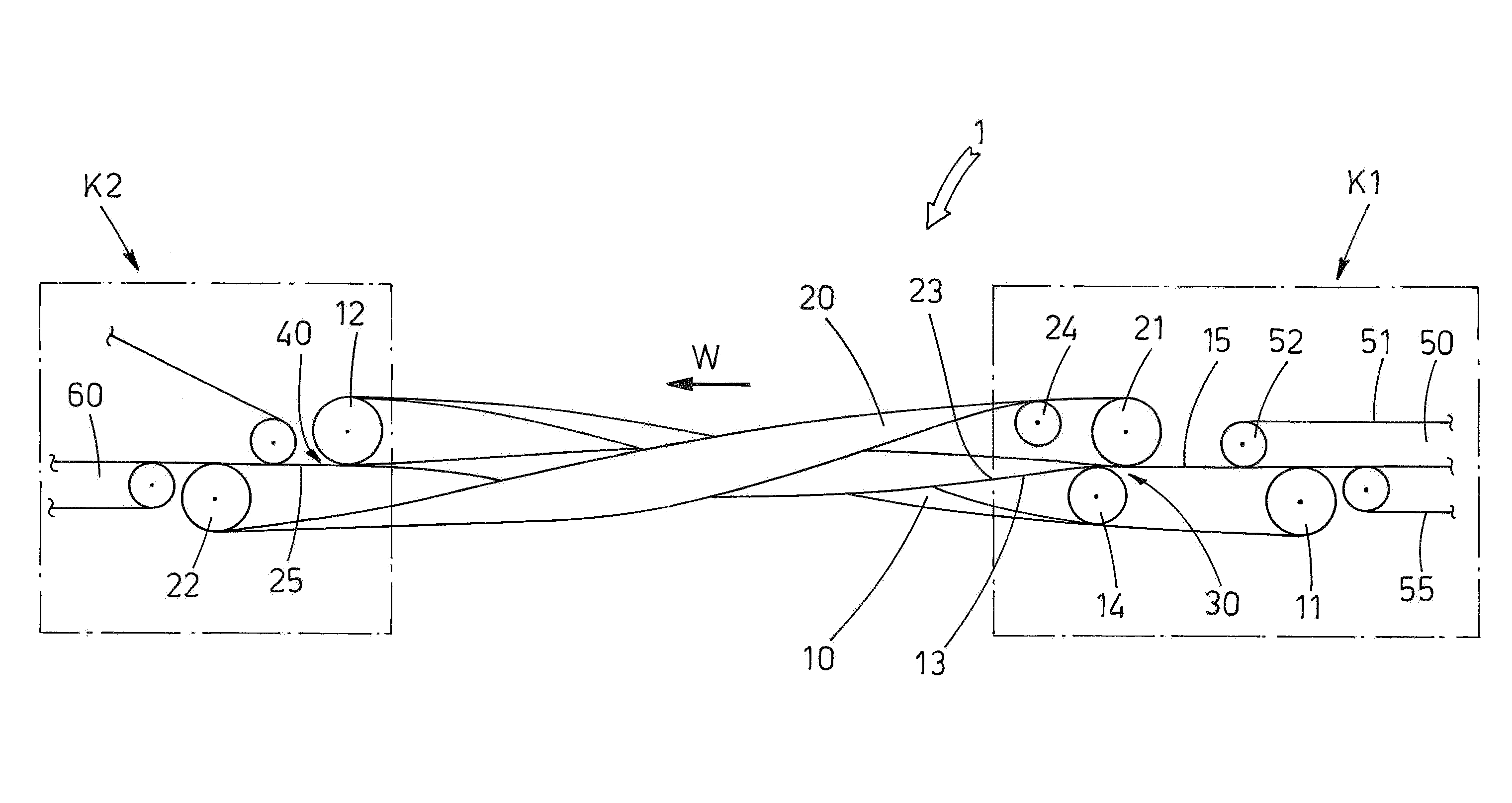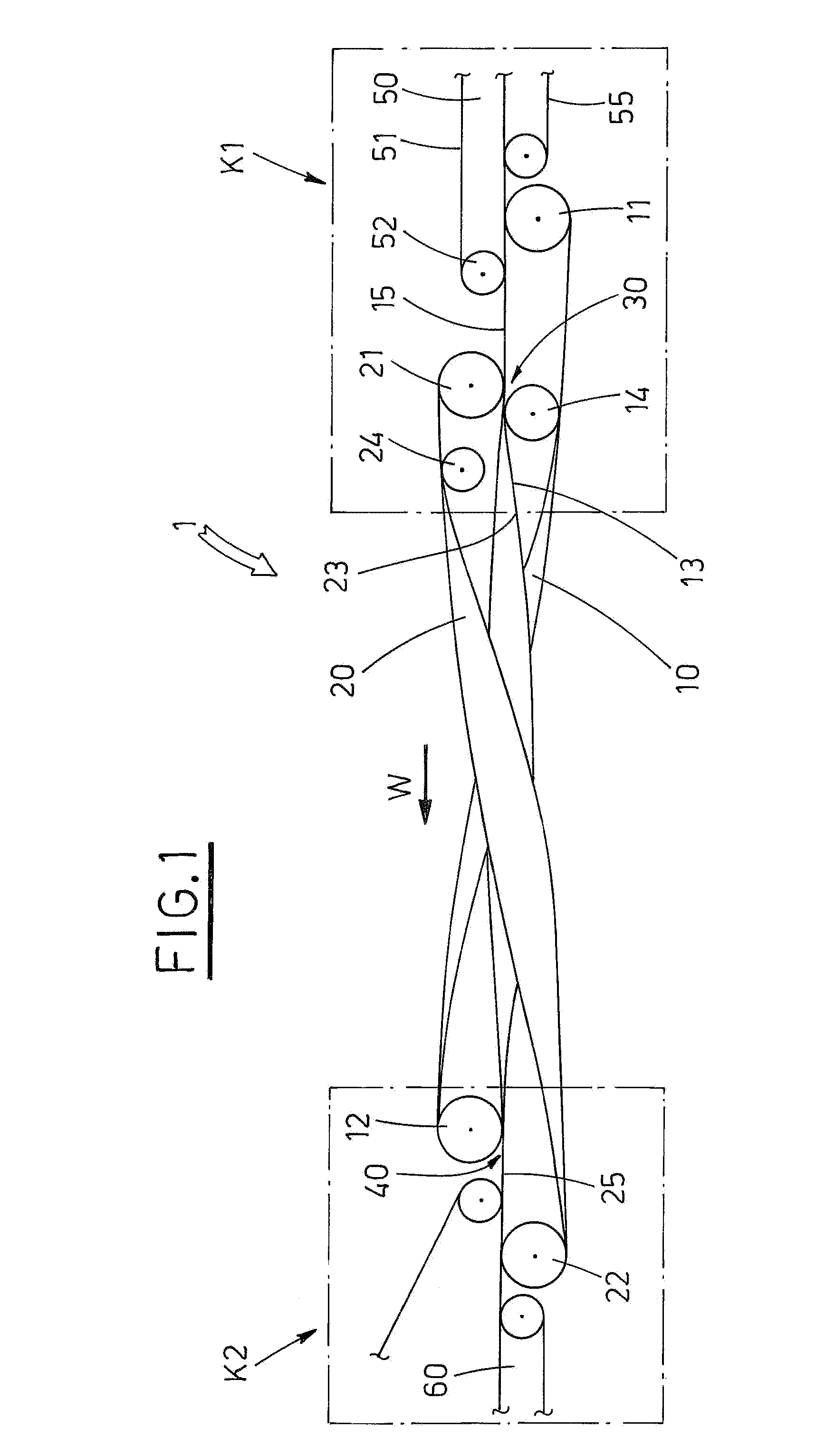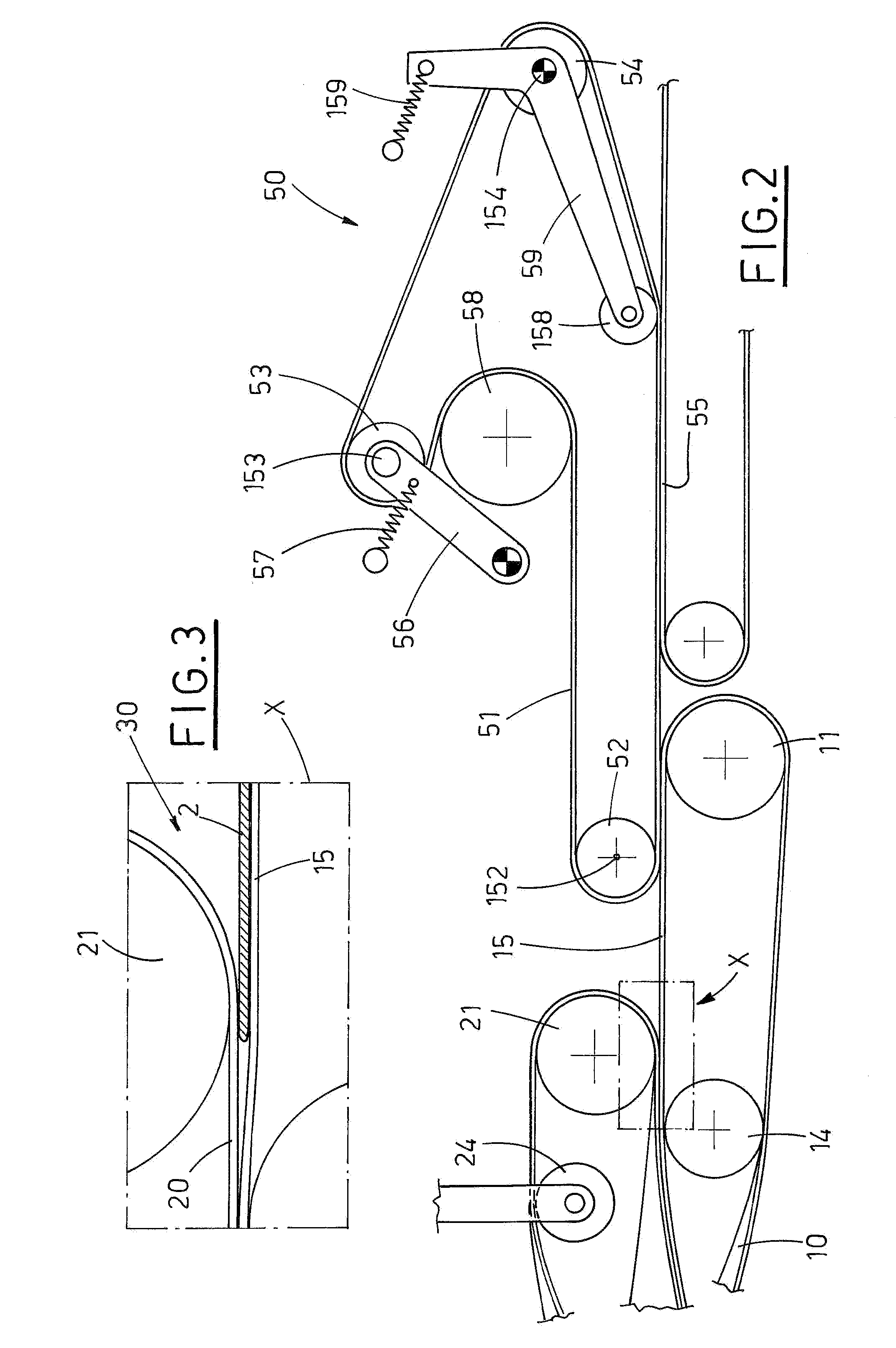Conveyor for transporting and overturning flat objects, such as sheaves of paper or printed materials
a technology for overturning and flat objects, which is applied in the direction of conveyor parts, thin material processing, function indicators, etc., can solve the problems of increasing the risk of jamming, the order may be unavoidable in such cases, and the construction and operation complexity of a device such as the one described above is self-evident, so as to achieve the effect of linking conveyors and being constructionally and functionally simpler
- Summary
- Abstract
- Description
- Claims
- Application Information
AI Technical Summary
Benefits of technology
Problems solved by technology
Method used
Image
Examples
Embodiment Construction
[0028]In the above figures, reference number 1 indicates the conveyor device which is the object of this invention, and which constitutes the link between the preparation line 50 (of which only the end part is shown in FIG. 1) of the sheaves 2 of sheets of paper or printed material (shown by way of example using dotted lines in FIG. 4 and for the sake of simplicity referred-to as “sheaves” hereinafter), and the envelope-filling station, of which only the access section 60 is shown.
[0029]The conveyor of the invention, in addition to its linking function as described above, also has the task of overturning the sheaves 2. The conveyor 1 is constituted by two belts, 10, 20 each having an active branch facing the active branch of the other belt and counterposed to it, as will be better described herein below.
[0030]A first belt 10 is ring-wound and fitted on parallel rollers, respectively an upstream roller 11 and a downstream roller 12. The rollers 11, 12 are rotatingly fitted on respect...
PUM
| Property | Measurement | Unit |
|---|---|---|
| width | aaaaa | aaaaa |
| elastic traction | aaaaa | aaaaa |
| elastic force | aaaaa | aaaaa |
Abstract
Description
Claims
Application Information
 Login to View More
Login to View More - R&D
- Intellectual Property
- Life Sciences
- Materials
- Tech Scout
- Unparalleled Data Quality
- Higher Quality Content
- 60% Fewer Hallucinations
Browse by: Latest US Patents, China's latest patents, Technical Efficacy Thesaurus, Application Domain, Technology Topic, Popular Technical Reports.
© 2025 PatSnap. All rights reserved.Legal|Privacy policy|Modern Slavery Act Transparency Statement|Sitemap|About US| Contact US: help@patsnap.com



